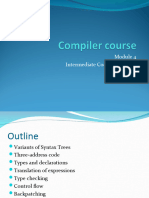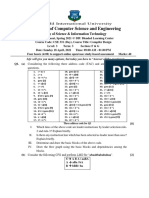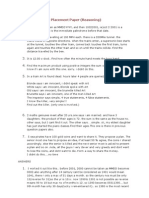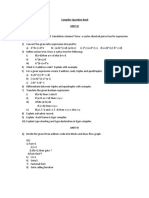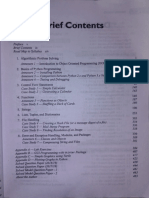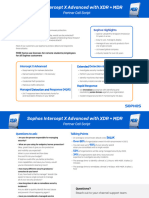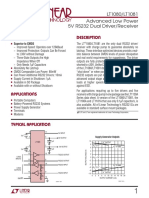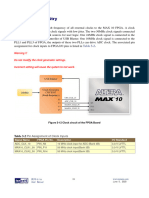0% found this document useful (0 votes)
19 views11 pagesCompiler
The document covers various topics related to compiler design, including Goto actions, FOLLOW sets, CLR(1) item sets, FlowML as a context-free language, fixed-length strings, and types of languages accepted by different automata. It also discusses intermediate code generation, three-address code, optimization techniques, and the representation of expressions in TAC. Additionally, it includes examples and justifications for assertions regarding optimization methods and code transformations.
Uploaded by
sathyaseelanvrCopyright
© © All Rights Reserved
We take content rights seriously. If you suspect this is your content, claim it here.
Available Formats
Download as PDF, TXT or read online on Scribd
0% found this document useful (0 votes)
19 views11 pagesCompiler
The document covers various topics related to compiler design, including Goto actions, FOLLOW sets, CLR(1) item sets, FlowML as a context-free language, fixed-length strings, and types of languages accepted by different automata. It also discusses intermediate code generation, three-address code, optimization techniques, and the representation of expressions in TAC. Additionally, it includes examples and justifications for assertions regarding optimization methods and code transformations.
Uploaded by
sathyaseelanvrCopyright
© © All Rights Reserved
We take content rights seriously. If you suspect this is your content, claim it here.
Available Formats
Download as PDF, TXT or read online on Scribd
/ 11











